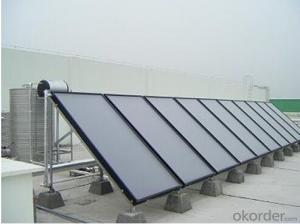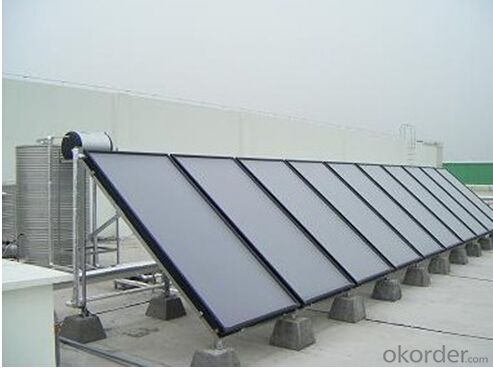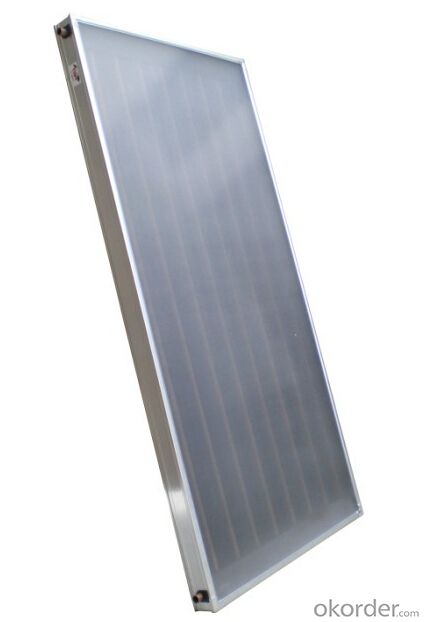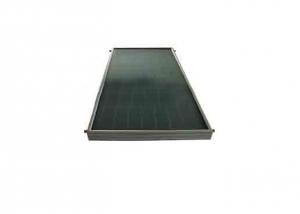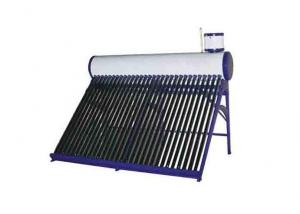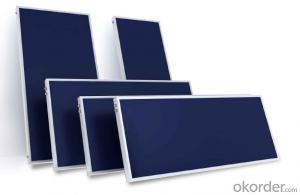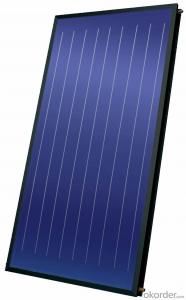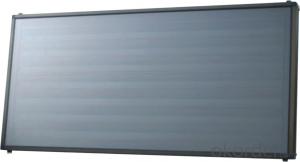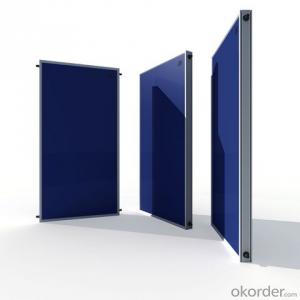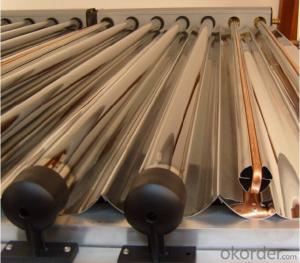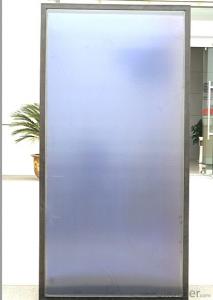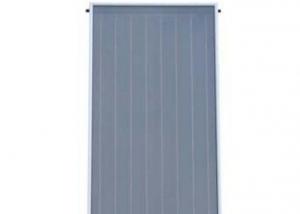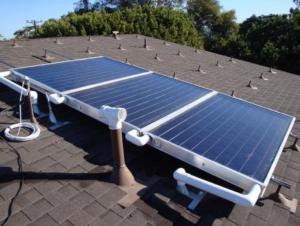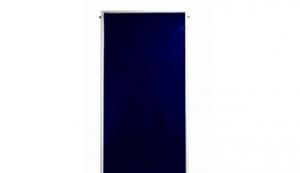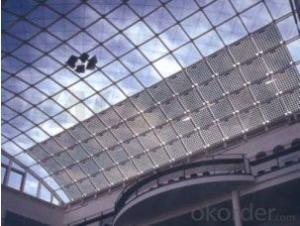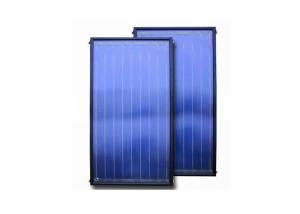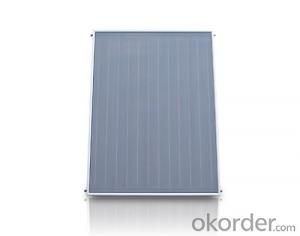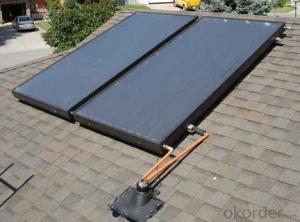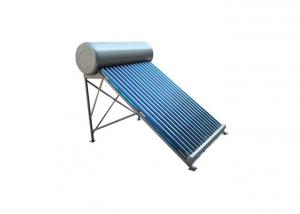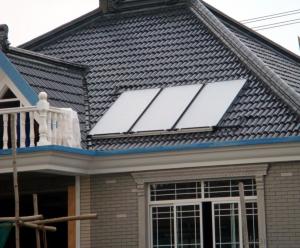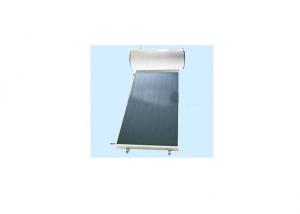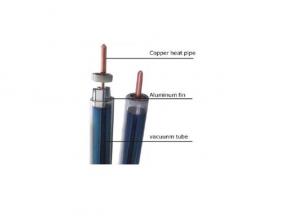Solar Collectors for Sale - Flat Plate for Solar Collector Model SDT3.0-A/C Series
- Loading Port:
- Shanghai
- Payment Terms:
- TT OR LC
- Min Order Qty:
- 50 pc
- Supply Capability:
- 300 pc/month
OKorder Service Pledge
OKorder Financial Service
You Might Also Like
1. Structure of Flat Plate for Solar Collector Model SDT3.0-A/C Series
This flat plate comprises strong low Iron tempered textured glass and absorber plate of different thickness and frame style for option, and risers and headers comform to international standard; for the back plate,it is constructed with galvanized steel and the frame is extruded with anodized aluminum alloy. This product is smart in appearance and get good quality.
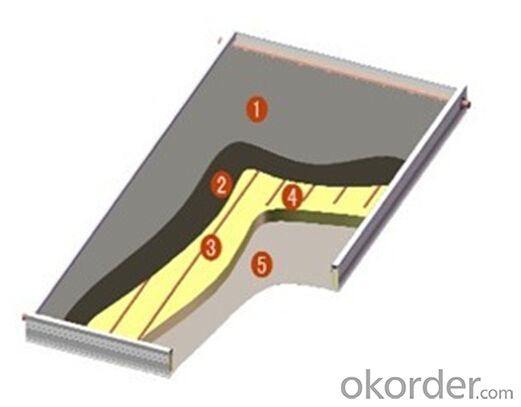
1.glazing, 2. absorber plate, 3. risers, 4. insulation, 5. casing
2. Main Features of Flat Plate for Solar Collector Model SDT3.0-A/C Series
low iron tempered textured glass can maximize the solar radiation available and minimize energy emittance
risers designed for either water or propylene glycol
good corrosion resistance and light handling capbilities
3. Flat Plate for Solar Collector Model SDT3.0-A/C Series Images
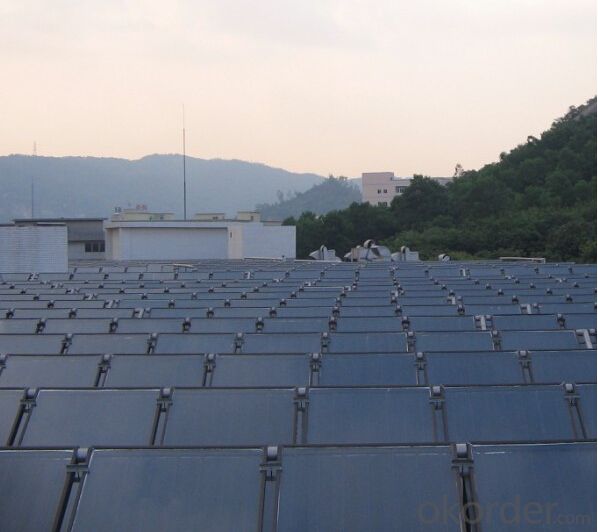
4. Flat Plate for Solar Collector Model SDT3.0-A/C Series Specifications
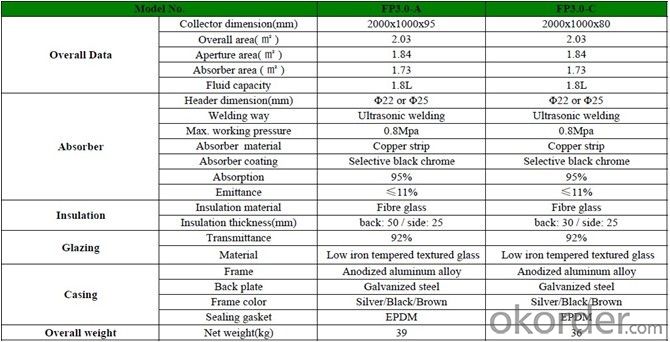
5. FAQ
Q1.: What is the respective diameter of the risers and heads?
Re: For the risers the diameter is 22mm &25mm and for the heads 10mm.
Q2.: What is the insulation of this product?
Re: Fiber glass is used to insulate the base of the collector to minimize heat loss. It has 30mm to 50mm thickness for option and has a conductivity <0.048W/(m.K).
- Q: Are solar collectors affected by hail or other severe weather conditions?
- Yes, solar collectors can be affected by hail or other severe weather conditions. Hail can cause physical damage to the collectors, such as cracks or dents on the surface, which can impair their performance. Other severe weather conditions like strong winds or heavy snowfall can also potentially damage or dislodge the collectors. However, proper design, installation, and use of protective measures can minimize the impact of these weather conditions on solar collectors.
- Q: Can solar collectors be used for generating electricity in winter?
- Yes, solar collectors can be used for generating electricity in winter. While the efficiency of solar collectors may be slightly reduced during winter due to shorter days and lower sunlight intensity, they can still generate electricity as long as there is sufficient sunlight available. Additionally, advancements in technology have improved the performance of solar collectors even in colder climates, making them a viable option for electricity generation during winter.
- Q: Can solar collectors be used for heating livestock facilities?
- Solar collectors can indeed be utilized to heat livestock facilities, offering a sustainable and cost-effective solution for their heating needs. By installing solar water heaters or solar air heaters, the sun's energy can be harnessed and converted into heat, which can then warm the air or water within the facilities. This creates a pleasant and healthy environment for the animals. The use of solar water heaters in livestock facilities has a multitude of purposes. It can provide hot water for cleaning, sterilizing equipment, and even for the animals to drink. On the other hand, solar air heaters can ensure that the temperature inside the facilities remains suitable for the animals, particularly during colder months. Employing solar collectors for heating livestock facilities carries numerous advantages. Firstly, it diminishes reliance on fossil fuels, contributing to a more sustainable and environmentally friendly operation. Secondly, it significantly reduces heating costs due to the abundance and cost-free nature of solar energy. Additionally, solar heating systems necessitate minimal maintenance and boast a long lifespan, making them a reliable and durable solution. Nevertheless, it is crucial to consider the specific requirements and size of the livestock facility when planning to install solar collectors. Factors such as the number of animals, facility size, and local climate must be taken into account to ensure that the solar heating system is appropriately sized and designed to meet the heating demands. Seeking the guidance of solar energy experts or professionals in the field can aid in the design of an efficient and effective solar heating system for livestock facilities.
- Q: How do solar collectors handle temperature fluctuations?
- Solar collectors are designed to handle temperature fluctuations by utilizing materials with high thermal conductivity, such as metals, which allow for efficient transfer of heat. Additionally, they are equipped with insulation to minimize heat loss during colder periods. Some collectors also use temperature sensors and control systems to regulate the flow of heat and maintain optimal operating conditions.
- Q: Can solar collectors be used in areas with limited access to insurance coverage?
- Yes, solar collectors can be used in areas with limited access to insurance coverage. While insurance coverage is always recommended to protect against potential risks and damages, it is not a requirement for installing and using solar collectors. These systems can still provide renewable energy benefits in areas where insurance coverage may be limited or unavailable.
- Q: Are solar collectors noisy?
- No, solar collectors are not noisy as they do not have any moving parts.
- Q: Can solar collectors be used in grid-tied systems?
- Yes, solar collectors can be used in grid-tied systems. In a grid-tied system, solar collectors are used to harness solar energy and convert it into electricity. This electricity can then be fed into the grid, reducing reliance on traditional power sources and potentially earning credits or financial incentives.
- Q: Can solar collectors be used for process heat in the manufacturing industry?
- Yes, solar collectors can be used for process heat in the manufacturing industry. By harnessing the sun's energy, solar collectors can generate heat that can be utilized in various industrial processes, such as heating water, drying materials, or powering industrial boilers. This renewable and sustainable source of heat can help reduce reliance on fossil fuels, lower operational costs, and decrease carbon emissions in the manufacturing sector.
- Q: What is the difference between a direct and indirect solar collector?
- A direct solar collector absorbs solar radiation and converts it into heat energy directly, while an indirect solar collector uses a heat transfer fluid to absorb solar radiation and then transfers that heat to another medium for utilization.
- Q: Do solar collectors require direct sunlight to work effectively?
- Yes, solar collectors do require direct sunlight to work effectively. Direct sunlight provides the highest amount of solar radiation, which is necessary for optimal energy conversion in solar collectors. While some level of diffuse sunlight can still be captured, direct sunlight ensures the highest efficiency and productivity of solar collectors.
Send your message to us
Solar Collectors for Sale - Flat Plate for Solar Collector Model SDT3.0-A/C Series
- Loading Port:
- Shanghai
- Payment Terms:
- TT OR LC
- Min Order Qty:
- 50 pc
- Supply Capability:
- 300 pc/month
OKorder Service Pledge
OKorder Financial Service
Similar products
Hot products
Hot Searches
Related keywords
